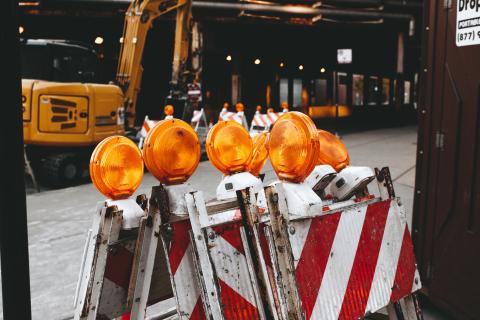What is an environmental site assessment?
An environmental site assessment is a study of past and present activities on a site or parcel of land. The information we gain from an assessment allows us to judge the possibility of contamination on the site, and the human and environmental health impact of that contamination.
An environmental site assessment involves a number of steps:
- historical study
- site inspection
- collection and testing of soil samples (and groundwater samples in some cases).
Assessments are often divided into 2 phases:
- Phase 1: preliminary assessment including a desktop review of relevant site information.
- Phase 2: uses the Phase 1 information for a more detailed assessment, including testing soils and/or groundwater for contamination.
The assessment culminates in a final report.
Airsafe performs environmental site assessments in accordance with state and territory legislation and policies, Australian standards and EPA guidelines.
When do I need an environmental site assessment?
An environmental site assessment is part of regulatory compliance. The EPA or your local council may require one as part of site rezoning or redevelopment requirements, or for property purchase or divestment, due diligence or commercial liability clean-up.
How to engage a consultant for an environmental site assessment
There are a couple of questions you should ask before engaging a consultant.
Do they have the necessary expertise?
Consider the type of expertise required to perform your particular site assessment. Environmental consultants typically perform assessments for a wide range of contamination issues, while occupational hygienists tend to specialise in asbestos.
Consider whether an accredited site auditor should be appointed to oversee the site assessment and any subsequent remediation works. Site auditors might be legally required when works are regulated under the Contaminated Land Management Act 1997 or Environmental Planning and Assessment Act 1979. However, they can also provide great value where complex contamination issues exist, or where the property will be involved in a high value transaction.
You should ensure the person carrying out the environmental site assessment is suitably qualified. This may include formal certification under an EPA-recognised scheme.
Do they have the right information?
Ensure the person carrying out the assessment has access to all relevant property information, and clearly understands the long term objectives for the property.
If the consultant has all the information they need, the site assessment should allow you to determine the location and extent of contamination, the fate and transport of the identified contaminants, and any impacts on the property management objectives.
Assessing risk if contamination is found
Consider evidence of harm to human health or the environment, potential exposure pathways, and evidence of off-site impacts. Also consider any business risks that may arise due to the contamination, including legal, financial or reputational risks.
You should also consider whether any preventative action can be taken to avoid further contamination.
Asbestos exposure risks
If asbestos is found in or on soil, the likelihood of exposure depends on:
- the potential for the asbestos material to release fibres
- whether the asbestos material is contained or covered
- operational control measures or personal protective equipment used to limit airborne fibre generation or inhalation.
Factors in how asbestos in soil is managed
If soil has been contaminated with asbestos, understanding the history of the site and how it became contaminated gives us useful insight into the nature of the issue and what further information may be needed. The main considerations in determining how to manage asbestos in soil include:
- the form of the asbestos containing material, and how readily it generates airborne fibres
- the extent or scale of asbestos contamination on the property
- whether the asbestos is predominantly on the surface or buried at depth
- the current and possible future uses of the affected land, and whether they might increase the risk posed by the asbestos containing material.
Complying with legislation
Results of a site assessment may oblige the land manager to report the contamination under section 60 of the Contaminated Land Management Act 1997.
The EPA’s Regulatory Policy sets out ways in which the EPA ensures those responsible for managing and remediating significantly contaminated land comply with their legal obligations, to achieve improved environmental and human health outcomes.
How can Airsafe help?
Airsafe has extensive experience in site-specific risk assessments for organic and inorganic contaminants. Our multi-disciplinary staff help clients across a range of industries, including petrochemical, industrial, commercial, government, and manufacturing.
Our consultants have all the legally required certifications, including those required by the EPA for specific types of report.




